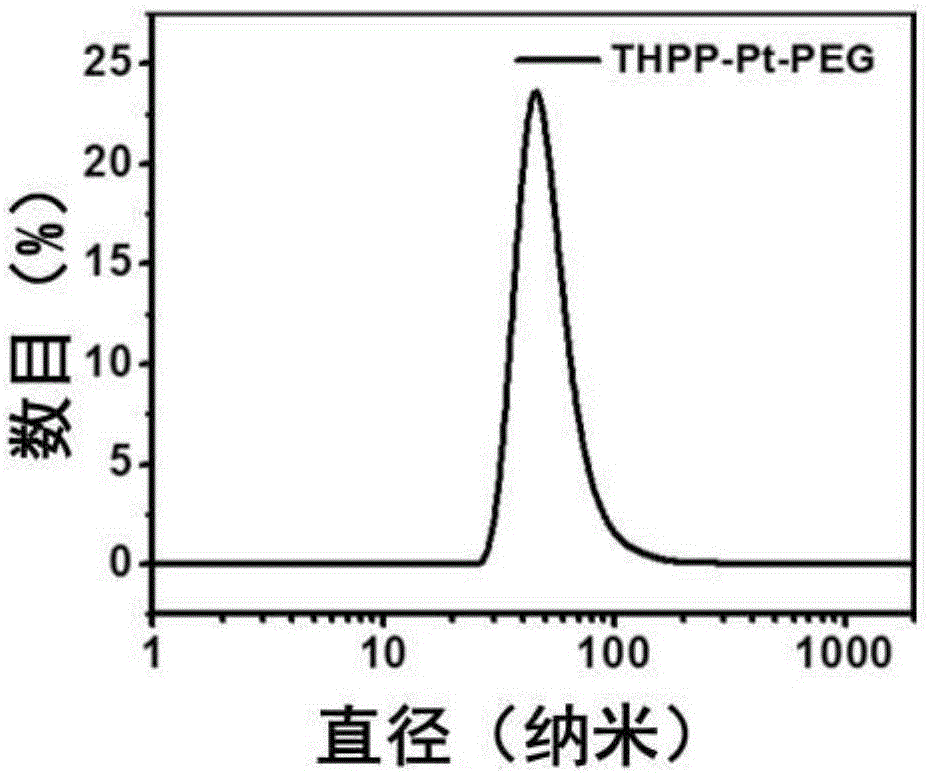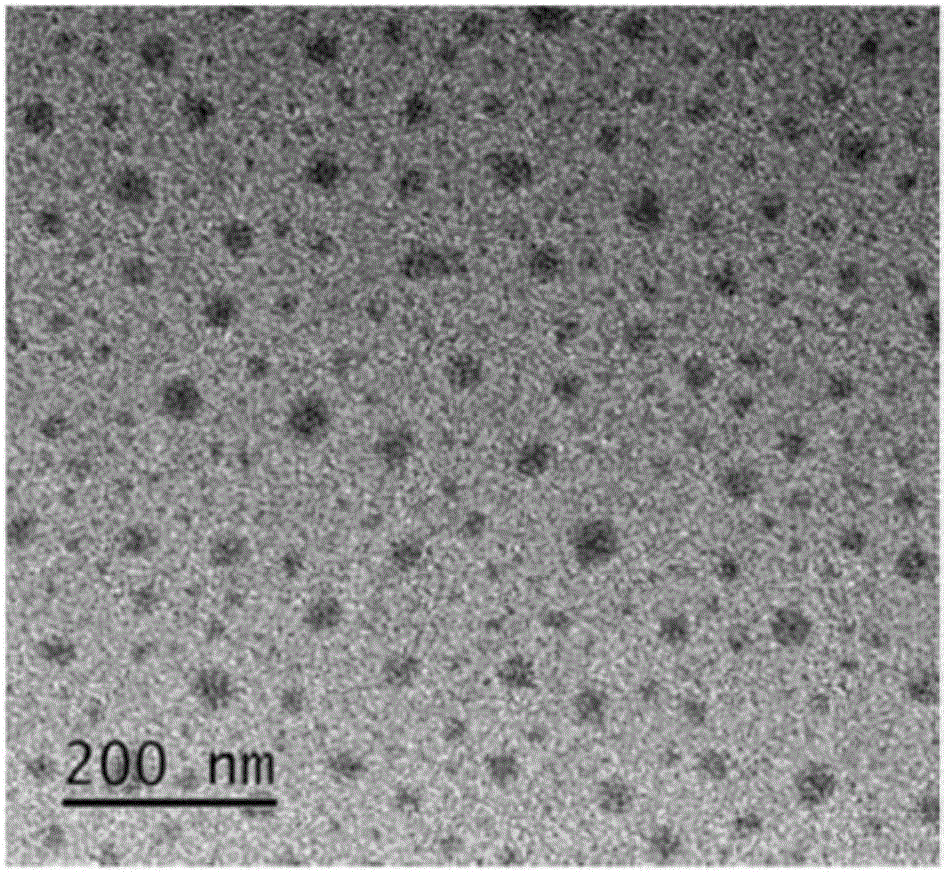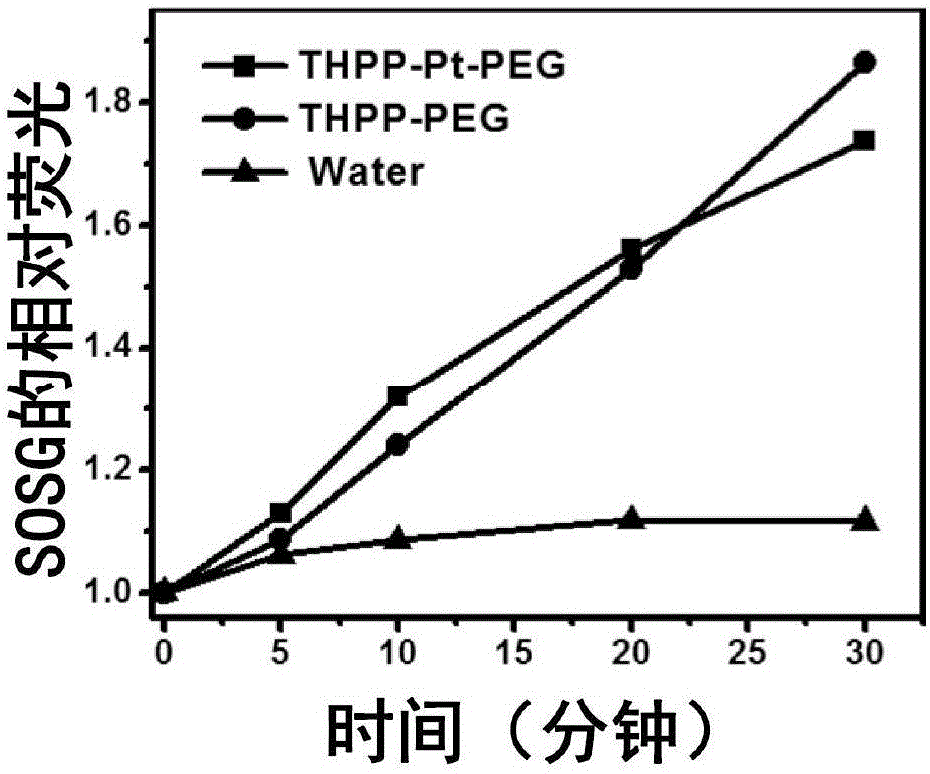Reduction responding covalent organic polymer and preparation method and application thereof
A covalent organic and polymer technology, applied in the field of medicine, can solve the problems of covalent organic polymers that have not been reported before, achieve good resolubility, avoid toxic and side effects, and improve the effect of hypoxia
- Summary
- Abstract
- Description
- Claims
- Application Information
AI Technical Summary
Problems solved by technology
Method used
Image
Examples
preparation example Construction
[0043]The present invention also provides a method for preparing a reduction-responsive covalent organic polymer, comprising: mixing and reacting carboxy-terminated polyethylene glycol, a compound of formula (I) and a carboxylated cisplatin prodrug to obtain a reduction-responsive Covalent organic polymers;
[0044]
[0045] Among them, R 1 , R 2 , R 3 and R 4 are independently selected from amino or hydroxy.
[0046] According to the present invention, the present invention mixes carboxyl-terminated polyethylene glycol, a compound of formula (I) and carboxylated cisplatin prodrug to obtain a reduction-responsive covalent organic polymer; wherein, the carboxyl-terminated polyethylene glycol The diol is monocarboxyl-terminated polyethylene glycol, i.e. The molecular weight of the carboxy-terminated polyethylene glycol is preferably 1KDa~10KDa, more preferably 3KDa~8Kda; the carboxylated cisplatin prodrug preferably has formula (Pt-1) or formula (Pt-2)
[0047]
[0...
Embodiment 1
[0054] Preparation of reduction-responsive covalent organic polymer (THPP-Pt-PEG)
[0055] Using 5, 10, 15, 20-tetrakis(4-hydroxyphenyl) porphyrin, carboxylated cisplatin prodrug and polyethylene glycol as reaction raw materials, a reduction-responsive covalent organic polymer THPP was prepared by esterification -Pt-PEG. Specifically include the following steps:
[0056] 27.2mg of 5,10,15,20-tetrakis(4-hydroxyphenyl)porphyrin, 32.1mg of carboxylated cisplatin prodrug, 49.4mg of N,N'-dicyclohexylcarbodiimide and 29.3mg The 4-dimethylaminopyridine was dissolved in dried tetrahydrofuran, and stirred and reacted for 24 hours at 35°C under a nitrogen atmosphere;
[0057] Then, 100 mg of polyethylene glycol with a carboxyl group at the single end, 12.4 mg of N, N'-dicyclohexylcarbodiimide and 7.3 mg of 4-dimethylaminopyridine were added to the system. The reaction was stirred for 24 hours. The resulting solution was concentrated and added dropwise to glacial ether to obtain the ...
Embodiment 3
[0065] Embodiment 3: THPP-Pt-PEG prepared in Example 1 is tested for the killing ability of tumor cells
[0066] The original drug of cisplatin and the covalent organic polymer THPP-PEG without cisplatin were selected as the control group, and the additional condition was 660nm laser irradiation, and 4T1 cells were selected to verify the killing ability of THPP-Pt-PEG on tumor cells.
[0067] The cumulative survival rate of 4T1 cells co-cultured with THPP-Pt-PEG and cisplatin with or without 660nm laser irradiation for 48 hours was tested by MTT test, the results are shown in Figure 6 , Figure 6 Prepare the cell viability figure of THPP-Pt-PEG and cisplatin and mouse breast cancer cell (4T1 cell) co-culture for embodiment 1, as can be seen from the figure, THPP-Pt-PEG compares with cisplatin and has more Strong lethality, and after laser irradiation, the lethality is greatly enhanced, which proves that compared with single chemotherapy, the combination of chemotherapy and p...
PUM
| Property | Measurement | Unit |
|---|---|---|
| Diameter | aaaaa | aaaaa |
| Particle size | aaaaa | aaaaa |
| Molecular weight | aaaaa | aaaaa |
Abstract
Description
Claims
Application Information
 Login to View More
Login to View More - R&D
- Intellectual Property
- Life Sciences
- Materials
- Tech Scout
- Unparalleled Data Quality
- Higher Quality Content
- 60% Fewer Hallucinations
Browse by: Latest US Patents, China's latest patents, Technical Efficacy Thesaurus, Application Domain, Technology Topic, Popular Technical Reports.
© 2025 PatSnap. All rights reserved.Legal|Privacy policy|Modern Slavery Act Transparency Statement|Sitemap|About US| Contact US: help@patsnap.com



